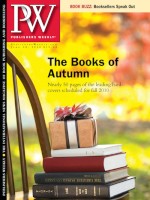A first novel, a coming-of-age story set in the South. The author is utterly unknown, has no academic or media affiliations, no Web site, no blog, no Facebook page, no Twitter account. She is shy. What's a publisher and a publicist to do?
In this case, the publisher is J.B. Lippincott. There's no record of the publicist. The novel is To Kill a Mockingbird. The author: Harper Lee. And 50 years ago the answer was: not much.
Granted, the technology for Lee to "go viral" didn't exist, but it happened anyway. It was called "the grapevine," as in, "heard it through the."
Early readers of To Kill a Mockingbird were more than enthusiastic—they were evangelists. "HARPER LEE'S FIRST NOVEL SETS THE WHOLE BOOK WORLD ON FIRE," blared a newspaper advertisement. The ad copy told the story: "Weeks before publication... those who read advance copies poured out their enthusiasm in letters to the author and publisher.... The grapevine began humming with excitement. Booksellers heard it and increased their orders. Booksellers said, ‘This is the book we are going to recommend to everybody.' "
Before there was Oprah, there was the Literary Guild and the Reader's Digest Book Club. Both chose the novel for its many members. When it was published in July 1960, To Kill a Mockingbird got some good reviews and some mixed ones. And the author interviews? There were hardly any. Lee's hometown paper took note, but it wasn't until the novel's popularity was assured that publications began to play catchup. Six months after the novel's release, Newsweek weighed in with a review/interview, but made the mistake of turning "mockingbird" into two words. "No book in years has commanded the kind of volunteer claque which is now pushing an unassuming first novel toward the best seller list summit." The one-column story suggested that Lee "strongly calls to mind the impish tomboy who narrates her novel" and noted that when Brendan Behan ("Ireland's newest play-writing boy of the Western World") appeared in the Algonquin Hotel lobby where the interview took place, Lee "eagerly craned around" saying, "I've always wanted to meet an author."
When To Kill a Mockingbird won the Pulitzer Prize the next spring, it had sold 500,000 copies. Life sent a photographer to Monroeville, Ala. Five pictures of Lee appeared alongside well-reported captions under the headline "Literary Laurels for a Novice." The New York Times did a story on the reaction of director Robert Mulligan and producer Alan Pakula, who were already working on the film version. (Elation was the word.)
When the movie was released, Lee was interviewed a few more times to find out if she was pleased with the result. (She was.) By then, the novel had been on bestseller lists for more than two years and sold many millions of copies. "Success has had a very bad effect on me," she told the Associated Press in March 1963. "I've gotten fat—but extremely uncomplacent. I'm running just as scared as before."
It wasn't until long after the hoopla died down that a lengthy interview with Lee turned up, on the radio. In March of 1964, she told interviewer Roy Newquist that her reaction to the success of her first novel "was one of sheer numbness. It was like being hit on the head and knocked out cold." Lee said she was hard at work on her next novel and "it goes slowly, very slowly."
And that was that. When I interviewed Harper Lee's sister, Alice Finch Lee, for my documentary film and book about To Kill a Mockingbird's power and influence, she said her sister's no-talking-to-the-press policy was a philosophical one, about a writer's place: "She did not think a writer should be recognized in person."
Harper Lee has done no publicity for more than 45 years. Her novel still sells nearly one million copies a year. The grapevine is still humming.
Harper published Mary Murphy's book Scout, Atticus, and Boo: A Celebration of Fifty Years of To Kill a Mockingbird earlier this month. For information on Murphy's documentary film, Hey, Boo: Harper Lee and To Kill a Mockingbird, visit www.marymurphy.net.



 Volume 257
Issue 25
06/28/2010
Volume 257
Issue 25
06/28/2010





